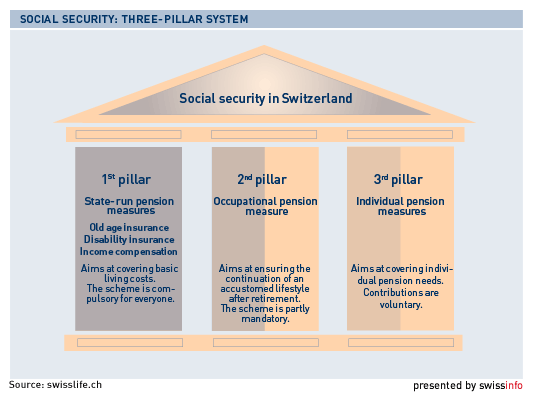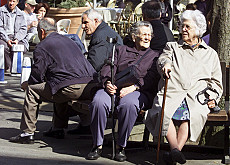Old people “are not just a burden”

Pensioners, usually blamed for straining national resources, are in fact a source of income for care workers and save billions by looking after grandchildren.
A study by the Swiss National Science Foundation also says the argument that people should have more children to balance out the generation gap is a “fallacy”, since children would not come free.
The report, part of the national research programme on “Childhood, Youth and Intergenerational Relationships in a Changing Society”, acknowledged that as Swiss society aged and the birth rate dropped there would be fewer people in work to pay for the increasing number of pensioners.
In Switzerland for every retired person there are now only four people in the workforce. In 1900 the proportion was 1:10. In 2050 the government estimates there will be only two people working for every individual over 65, putting more pressure on the pension system.
However, researchers said the solution was not simply having more children to balance out the generations. A higher birth rate would help balance out the ageing population, but parents would consequently have to pay for these children’s needs.
The study, published on Tuesday, stressed that an ageing society didn’t necessarily mean a burden on younger generations because looking after sick older people created many jobs in the healthcare sector.
It added that in Switzerland family solidarity was strong, with six out of ten people aged over 80 who lived at home being cared for by family. Only a fifth of over-80s lived in nursing homes.
The report estimated that this private care was worth SFr10-12 billion ($9.5-11.4 billion) a year.
What’s more, grandparents spend 100 million hours a year looking after children, worth an estimated SFr2 billion. Women do 80 per cent of this private work.
Old people also leave large sums of money. In 2000 the amount handed on was worth SFr28.5 billion, some seven per cent of gross domestic product (GDP). Disparities exist however: while 0.6 per cent of Swiss inherit more than SFr5 million, 50 per cent receive less than SFr50,000.
Demographic changes
The report’s conclusions make a change from the “financial time bomb” headlines usually associated with the increasing number of pensioners.
In May the finance ministry warned that the country’s ageing population would put financial resources under increasing strain as more and more people retire.
The financial situation would be critical in 2050 with public debt equivalent to 130 per cent of GDP, it said. Officials recommended that social security financing be urgently reviewed to lessen the impact of demographic change.
Switzerland’s baby boom generation – people born between 1946 and 1964 – will be retiring over the next 20 years. But during this time the birth rate is not expected to rise, while life expectancy will continue to increase.
According to the finance ministry, this means that the number of people over the age of 80 will quadruple between 1991 and 2050, while the number of those between 65 and 80 will double.
In April the Federal Social Insurance Office suggested that amid shifting demographic trends and an increasingly wealthy generation of retired people, a re-examination of the country’s three-pillar old age pension scheme was urgently needed.
According to federal and cantonal data, the wealthiest segment of the population now constitutes those between the ages of 55 and 75.
On Tuesday researchers recommended a series of political measures, including a broader financing of retirement provisions, enabling people who want to work longer to do so and targeted health promotion. This, they said, would mean the burden on future generations would increase moderately at most.
swissinfo with agencies
Switzerland has a “three pillar” social insurance system.
The first pillar provides a basic old-age pension, a pension for surviving dependents and an invalidity pension for those unable to work for health reasons.
Everyone must contribute, whether working or not.
The second pillar is compulsory only for employed people. Employers and employees contribute.
The third pillar is optional: it is a savings scheme with tax advantages to provide extra benefits on retirement.
Plans for the latest reform of the scheme foresee raising the retirement age for women by one year to 65, in line with that of men. The reform also includes ways of facilitating earlier retirement, the option of putting off retirement, as well as new funding mechanisms to adapt pensions to inflation. Another proposal wants to impose a levy to finance an early retirement scheme.
The number of old age pensioners was 1.755 million in 2007. The scheme recorded a surplus of SFr2.7 billion in 2006.


In compliance with the JTI standards
More: SWI swissinfo.ch certified by the Journalism Trust Initiative



You can find an overview of ongoing debates with our journalists here. Please join us!
If you want to start a conversation about a topic raised in this article or want to report factual errors, email us at english@swissinfo.ch.